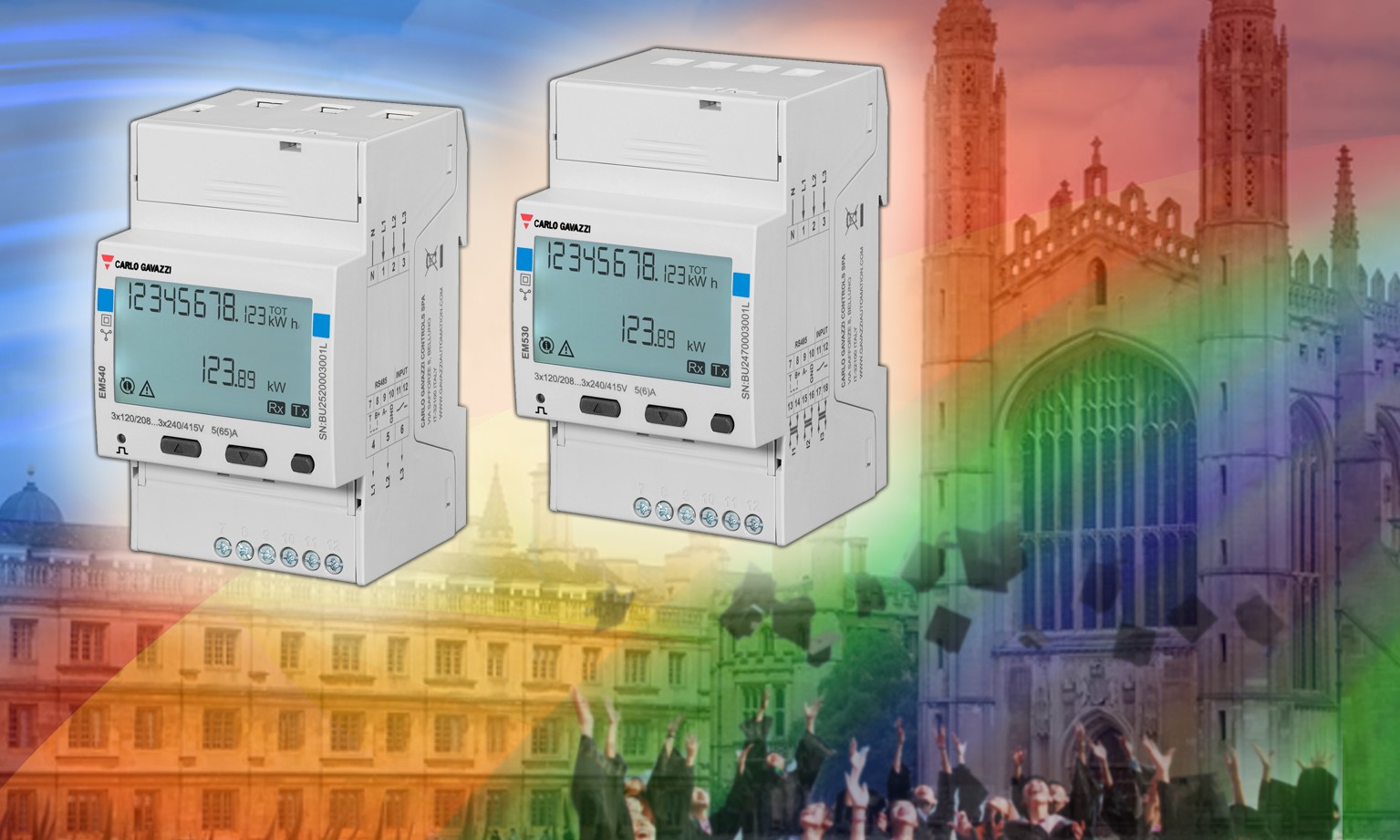Universities stand to face hefty energy bills now and in the future as the price of energy continues to soar. In this article William Darby, Managing Director of Carlo Gavazzi UK, explains how metering and benchmarking can be used by colleges and universities to optimise energy use and avoid energy wastage.
Universities stand to face hefty energy bills as the price of energy continues to soar. Driven by the global surge in demand from economies recovering after the Covid pandemic, energy prices are rocketing. It is a bad situation made worse by the growing boycott of Russian oil and gas supplies following the country's invasion of Ukraine.
When it comes to energy usage, universities and colleges face some unique challenges:
- Student numbers are growing, the Higher Education Policy Institute predict a need for more than 40,000 additional study places just to account for population growth by 2035 coupled with continued demand from international students due to the UK’s reputation for quality education
- Many campuses incorporate older buildings that were not designed to be energy efficient or rely on outdated plant to provide heat and ventilation
- And campuses often incorporate energy intensive facilities, such as research laboratories, where specialist equipment may have an unusually high energy demand
- In addition to teaching buildings, many colleges and universities also provide student accommodation and halls of residences, which require heating, hot water and catering facilities
What this unusual combination of events means is that operational efficiency and energy reduction have never been more important.
The first step to saving energy is to monitor and benchmark; the more a college knows about energy usage the better equipped it is to manage it. Monitoring meter readings regularly is a low or no cost measure that enables college and universities to ascertain basic energy use patterns. It will also allow a college to understand which buildings consume the most energy and when.
Benchmarking to compare a building's energy consumption to similar buildings on the campus or elsewhere can also help estates offices to identify underperforming buildings by revealing whether a particular building is using a lot more energy than similar buildings.
However, in addition to identifying the worst performing buildings, benchmarking can also help establish which of the buildings on a campus are the most energy efficient. Estate managers or their FM teams can then look to replicate the most effective and successful energy-saving practices from these buildings in those underperforming buildings.
It is also important to understand why specific buildings are consuming excessive amounts of energy. Sub-meters can be used to monitor individual energy uses and so can provide more granular information on specific systems to help establish why energy use is high. There are many possible explanations for fluctuations in energy use patterns, for example seasonal variations in heat consumption, but monitoring may also find a change that can’t be explained. For example, there may be no reduction in energy use when you would expect to see one because plant has been left running, or lights left on, over a weekend -or through holiday periods.
The adage - you cannot manage what you don’t measure - is certainly true when it comes to university energy consumption. The simple function of installing metering on all of the primary energy-consuming plant in a building or research facility will provide managers with a huge amount of useful data; data that can be used to optimise the way a building is run.
Meters such as Carlo Gavazzi’s EM530/EM540 3-phase energy analyser are perfectly suited to energy metering of buildings and larger individual items of plant such as HVAC equipment, lighting circuits, computer servers and other power-consuming auxiliary equipment. Single phase applications can be metered using Carlo Gavazzi’s EM111 and EM112 1-phase energy meters.
These energy meters can be connected to Carlo Gavazzi’s UWP universal web controller, which allows managers to monitor the system and to record and transmit data. This smart energy monitoring solution makes it a simple task to determine energy usage of both individual items of equipment and the overall energy usage of a campus, either on site or remotely, in order to see how much power is being consumed, where and when, both as real time consumption and as historical data. For larger facilities with multiple items of plant a centralised system will also allow all of the collected data to be pooled to help paint a bigger picture of energy use patterns.
Of course, understanding energy consumption is only the first step towards reducing energy usage. The next step is to make the energy reduction happen. This can be as simple as influencing behaviours; it may involve changes to ways of working or even assigning accountability for targets around consumption.
Understanding energy consumption is also key in supporting investment decisions, for example on whether it is cost effective to insulate a building or to simply upgrade its heating or lighting systems. Here, ongoing monitoring will show if an intervention is achieving the expected return on investment.
Ultimately, by reducing energy consumptions colleges and universities will become more sustainable, both environmentally and economically - which can only be a good thing.
For more information on Carlo Gavazzi's metering solutions go to: www.carlogavazzi.co.uk.


